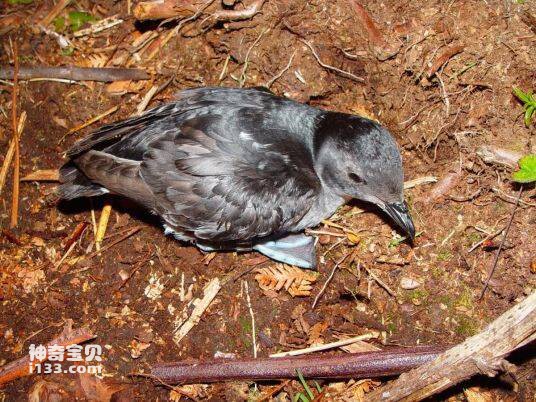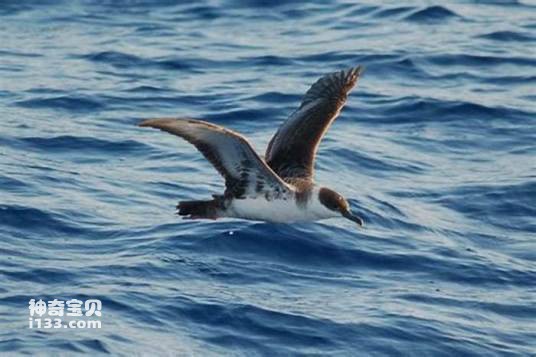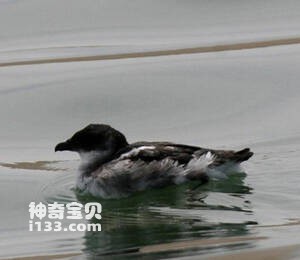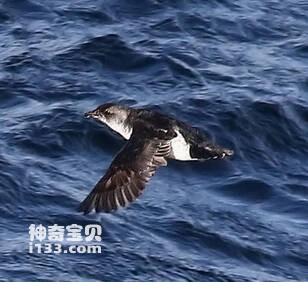Phalacrocorax urile
IUCN
LCBasic Information
Scientific classification
- name:Phalacrocorax urile
- Scientific Name:Red-faced Cormorant、 water crow
- Outline:Waterfowl
- Family:U.urile Urile Phalacrocoracidae Suliformes
Vital signs
- length:70~76cm
- Weight:2kg
- lifetime:3-5 years, some even more than 10 years
Feature
It is very similar in appearance to the sea cormorant, but is larger in size, with a shorter neck than the sea cormorant, and a larger area of bare red skin on the face and around the eyes. The iris is green-brown, the bill is yellow, darker at the tip but sky blue at the base (brown during the non-breeding season), and the feet are black.
Distribution and Habitat
Mainly in coastal and estuary areas. This kind of cormorant prefers areas close to the ocean or large rivers, which provide abundant food sources, including fish and shrimp, as well as a good breeding environment. The red-faced cormorant has a wide distribution range, breeding in eastern Siberia, Sakhalin Island, the Aleutian Islands and Japan, and wintering in California, southern Japan and China. This information shows that the red-faced cormorant can adapt to a variety of environments, from the frigid zone to the temperate zone, showing the breadth of its ecological adaptability.
Appearance
The body is about 70 cm long, with shiny black feathers. The face is red, similar to the red-faced cormorant, but the crest feathers are sparse and soft during the breeding season. The face is not as red as the forehead, but the cheeks are more red. The face of young birds and birds in the non-breeding season is pink-gray and the body is slightly smaller. Iris and beak color: iris blue; beak yellow; feet gray.
Details
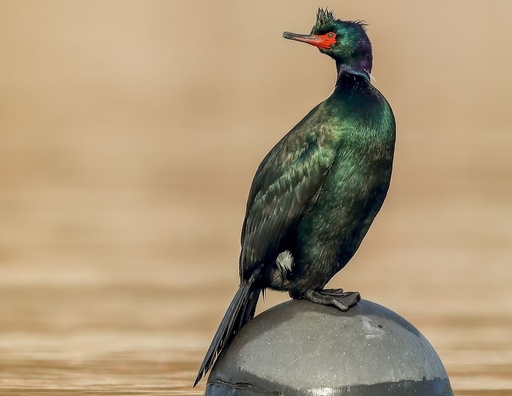
The red-faced cormorant (Phalacrocorax urile), also known as the red-faced cormorant, is a bird of the genus Phalacrocorax in the family Cormoridae. It is commonly known as the water crow. It is a bird belonging to the family Phalacrocorax.
Distributed in the northern Pacific Ocean in Alaska, the Aleutian Islands, Siberia in Asia, the southern tip of the Kamchatka Peninsula, the Kuril Islands and the waters of Hokkaido, and the northern part of the Korean Peninsula, wintering in the breeding grounds in the south to the coast of Japan and the Liaodong Peninsula of China, and occasionally to Taiwan. This species is a seabird that breeds from the coast of the Kamchatka Peninsula to the Aleutian Islands and the Kuril Islands. It breeds on the rocks along the coast or on small islands. The type locality of this species is the Kamchatka Peninsula in eastern Siberia.
A large water bird, 70 to 76 cm long and weighing about 2 kg, its wingspan ranges from 25 to 29 cm (9.8 to 11.4 inches), and the female bird is on average about 5 cm (2.0 inches) shorter than the male bird. Adults weigh between 1.5 and 2.3 kg (3.3 and 5.1 lb), with females averaging 350 g (12 oz) lighter than males. Adults have lustrous dark blue-green feathers that turn purple or copper on the back and sides. Summer plumage is mainly black, with a cluster of separate black crest feathers on the top of the head and nape, with a copper-green metallic luster, and a cluster of long, narrow white feathers on the waist and thighs. There are sparse, narrow white feathers at the base of the neck and under the tail. There are 11 black flight feathers, the second flight feather is the longest, the neck has a purple sheen, and the beak has a green sheen. Winter plumage is also black and metallic. The head and neck have a green sheen, the tail is round, and there are 12 tail feathers. The tail and abdomen are decorated with copper green, and the back and shoulders are purple-green.
. In the breeding season, it has a double crest and white feathers on the flanks, neck and tail, and the exposed bill slit and skin around the eyes are bright orange or red, which gives this bird its name; although in the non-breeding season, the color is not as bright, but the red facial skin is enough to distinguish it from other similar dark cormorants. The feet are short and thick, and the legs and feet are brown-black.
The iris is brown, and the base of the bill, the sides of the throat and the exposed skin around the eyes are bright red. Juveniles are dark brown, with slightly purple shoulders and wing coverts, and a smoky gray head and upper back. The rest is similar to adults.
Size measurement: weight 2000 grams, body length 700~760 mm, bill peak 53~57 mm.
Habitat
The habitat of the red-faced cormorant is mainly coastal and estuary areas. This cormorant prefers areas close to the ocean or large rivers, which provide rich food sources, including fish, shrimp, etc., and also provide a good breeding environment. The red-faced cormorant has a wide distribution range. It breeds in eastern Siberia, Sakhalin Island, the Aleutian Islands and Japan, and winters in California, southern Japan and China. This information shows that the red-faced cormorant can adapt to a variety of environments, from the cold zone to the temperate zone, showing the wide range of its ecological adaptability.
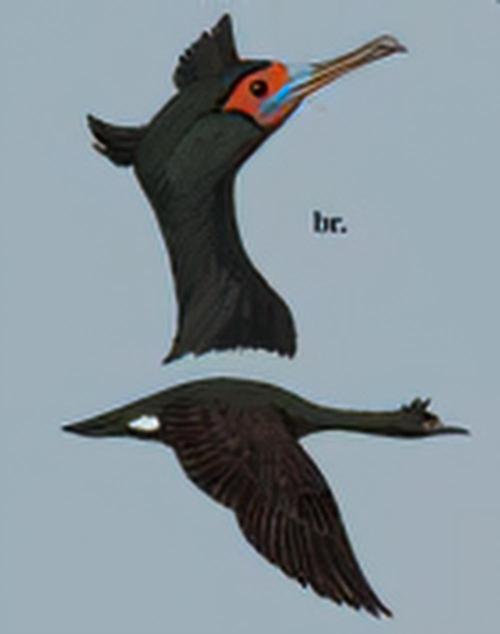
Reproduction: The breeding season is from May to August. Nesting on cliffs on the coast and nearby islands, especially on relatively flat and open cliffs and rocks protruding into the sea. Often nesting in small scattered groups. The nest is usually made of seaweed. Parent birds usually dive underwater near the sea surface near the nesting area to take seaweed as nesting materials. The nest contains fine and soft seaweed and bird feathers. The average size of the nest is 40 to 50 cm in diameter and 15 cm in height. If the breeding is successful, the nest will continue to be used the next year, or it may be used for several years. Each nest can lay 3 to 6 eggs, which are long oval and light blue or white in color. The size is 53~66×33~42 mm, with an average of 60×38 mm. The incubation period is about 28 days. The start of breeding in different breeding groups and different regions is very inconsistent. The earliest ones start laying eggs in late May and early June, while the latest ones lay eggs in July. Some young birds leave the nest at the end of July, but some do not leave the nest until September. The chicks are late-maturing. When they are just hatched, they are naked and featherless, and their eyes are not open. A few days later, down feathers grow in the middle of their backs. The growth rate of newborn chicks is very fast. It only takes more than 40 days to grow to the size of an adult bird, but at this time they only have immature down feathers on their bodies. They will not leave the nest until their flight feathers are fully grown. It is listed as a species of conservation concern.
In addition, the reproduction and growth characteristics of red-faced cormorants show that they are relatively fertile among large birds, although their reproductive capacity is not strong. However, their population is not small and their distribution range is very wide, including the Kuril Islands, the Aleutian Islands and Japan, and even extends to the bays of Taiwan Province and Liaodong Peninsula in China. Most red-faced cormorants are resident birds, and only a few will migrate.
Food and foraging
Analysis of stomach contents showed that red-faced cormorants are mainly bottom-dwelling foragers, mainly feeding on fish and shrimp, and a small amount of seaweed, kelp, sea laver, etc., especially preying on sculpins. Adult birds have few predators, but otters may try to catch them, and various corvids, bald eagles and golden eagles will also prey on them. Gulls and corvids are common predators of their eggs and chicks.
Morphological characteristics
Summer plumage is mainly black, with a cluster of separate crest feathers on the top of the head and occipital, which are black in color and have a copper-green metallic luster, and a cluster of long and narrow white feathers on the waist and thigh. There are sparse and narrow white feathers at the base of the neck and under the tail. There are 11 black flight feathers, the second flight feather is the longest, the neck has a purple sheen, and the beak has a green sheen.
Winter feathers are also black with a metallic luster. The head and neck have a green sheen, the tail is round, and there are 12 tail feathers. The tail and abdomen are decorated with copper green, and the back and shoulders are purple-green.
The iris is brown, the base of the beak, the sides of the throat and the exposed skin around the eyes are bright red, and the feet are short, thick, and black.
Juvenile birds are dark brown, with slightly purple shoulders and wing coverts, and the head and upper back are smoky gray. The rest are similar to adults.
Size measurement: weight 2000 grams, body length 700~760 mm, beak peak 53~57 mm.




